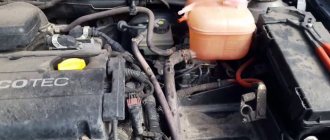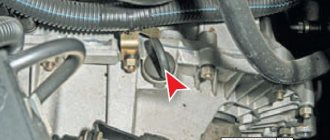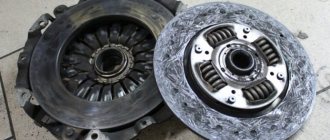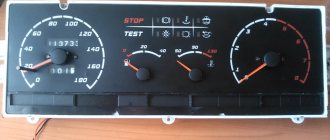Often, novice motorists wonder how to learn how to properly care for the battery - if it belongs to the serviceable category. Since many people know that from time to time distilled water should be used to top up batteries, the question becomes relevant: how much distilled water to add to the battery, what is the point of caring for the battery in this way, and whether all this can be done at home. First, let's figure out why this type of water is used in the battery.
Purpose of distilled water
Distilled water is an important component in the liquid of a car battery, ensures its full functionality, maintains the desired density of the electrolyte, which contains 65%. And the percentage of sulfuric acid is only 35%.
Sulfuric acid is a fairly highly concentrated chemical compound that, in its pure form, poses a danger to the battery. To reduce its concentration, purified water is needed. The ratio Н2О/H2SO4 = 65/35 ensures the accumulation of electrical energy at the time of charging the battery, which is subsequently used to start and move the vehicle.
Distilled water (DV) is ordinary water purified from organic compounds (waste products of plants and animals, bacteria, viruses) and inorganic impurities (salts, mineral additives, other substances). It consists of two chemical elements: hydrogen (H) and oxygen (O).
Before you find out how much distilled water to add to the battery, it is important to understand that ordinary water is not suitable for such a procedure. It contains a large number of different impurities (salts, chlorine, lime and others), which contribute to the rapid failure of the car battery. You cannot pour boiled water into the battery, since ordinary boiling does not distill (purify) the liquid in full.
Water inside the battery
How we figured out water AJ - 65%! But it is not simple (from the tap) , but distilled without any impurities (this is necessary for many reasons, if only because the resistance inside decreases, there is no sediment on the plates, etc.).
But its level is not constant. As is known from high temperatures in the engine compartment, from charging the generator (sometimes overcharging ), water can evaporate from the cans, and the electrolyte level drops.
Sulfuric acid does not evaporate, and therefore its concentration begins to increase; this is bad for the battery in several ways:
- High density negatively affects the plates, destroying them
- The level drops, which means the plates are exposed, thereby reducing the battery capacity and it is not able to start your car.
- At high acid concentrations, sulfation of the plates
To avoid this, you must replenish it - add water inside the battery to the required minimum.
Why is no electrolyte used?
During the operation of the battery, especially in the summer, the battery heats up, as a result of which the jars may boil. The DW evaporates at this moment. Acid is a non-volatile liquid; accordingly, it remains and the concentration of water decreases. The density of the mixture sometimes increases to 1.4 g/cm3. Therefore, in order to bring the electrolyte to normal density, it is necessary to add DV.
If you pour electrolyte, the density will decrease, but not enough.
It is important to remember about salt precipitation and destruction of the plates. Therefore, in order to reduce the density of the liquid to the established norm, only DV is added. This rule must always be remembered!
It is also worth remembering that water is added only to batteries of the type being serviced, which are characterized by maximum evaporation. Maintenance-free batteries are equipped with a molded sealed case; the evaporated liquid does not come out, it precipitates inside the can. In this case, a closed cycle occurs; there is no need to add water.
We recommend: Exide Premium car battery: pros and cons of the battery
When is battery refilling required?
Most experts believe that car batteries do not require maintenance. Accordingly, adding water to it is irrelevant, but provided that the battery is used under normal conditions. It is imperative to check the fluid level for motorists who travel long distances in their own cars. In this case, the probability of converting the liquid into a vapor state is greatest. And also the active process of water evaporation is carried out in the event of failure of the relay regulator.
Main indicators of failure of the relay regulator:
- during the operation of the vehicle, the battery becomes very hot;
- drops of electrolyte are observed on the battery body;
- Strong steam comes out of the filler necks.
It is necessary to take into account the design of the battery. In serviced models, much greater evaporation of H2O occurs. Therefore, it is for them that it is worth knowing how much water to add to the battery. In maintenance-free models, evaporation of liquid into the environment is prevented by a sealed cast housing. Such batteries do not require additional maintenance.
Checking the electrolyte level
The presence of electrolyte is checked exclusively in serviced batteries.
They are most often equipped with a transparent body, so inspection is carried out visually. For this purpose, special marks are made on the surface corresponding to a certain volume of liquid. Serviceable batteries with an opaque casing are also available. To determine to what level to add water to the battery in this case, the vehicle owner will need a special transparent tube with a diameter of 0.5 cm.
Fluid level check sequence:
- The battery cover is unscrewed;
- the transparent tube is lowered into the liquid, and it should rest against the bottom of the jar;
- its outer hole is clamped tightly with a finger;
- it is then removed from the battery to determine the electrolyte level.
Such a tube has minimum and maximum divisions. Accordingly, if the accumulated liquid is within these limits, the volume of electrolyte is normal. If the fluid is below the minimum, you need to add DV.
Volume
How much distilled water should I add to the battery? What level is acceptable? It is necessary to top up until the plates disappear and are no longer visible. Translating the values into numbers, the amount of water depends on the total capacity of the battery, so you need to focus on hiding the plates with electrolyte by 1.5-2 cm. It is at this level that the required electrolyte density of 1.27 g/cm 3 is achieved.
Important: if, when adding water, the level is exceeded, the density will decrease, and there will be a possibility of the battery “freezing” in winter. When the level is exceeded, you can pump out the water using the syringe that was used to add it.
As a result, we can say that adding water to serviced batteries is an immediate necessity. The situation with maintenance-free batteries is different - it depends only on the wishes of the car owner. But in any case, you must remember that adding water is a temporary measure! After some time, it will still become unusable, and you will have to buy a new one.
How much water should be added
With modern batteries it is easier to figure out how much DV to add to the system. Their body is often made of transparent plastic, on which the liquid volume scale is broken. You just need to visually monitor its level in the system. It should not be less or more than the permissible norm.
We recommend: Varta silver dynamic car battery
Recommendations on how to add distilled water to a battery of a different design are as follows:
- Some battery models have a plastic (metal) “tongue” slightly below the neck of the can. It is necessary to fill the liquid 0.5 cm above it.
- If there are no marks in the jar, add water 1.5 cm above the lead plates.
- If it is impossible to visually determine the presence of electrolyte in the battery, then it is recommended to use a specialized glass tube with a scale.
It is important to correctly top up the electrolyte so that the density of the electrolyte meets the established standards. At higher concentrations, hydrochloric acid will destroy lead plates.
If it is deficient, you can defrost a car battery at significant sub-zero temperatures.
Proper battery maintenance
Currently, the industry mainly produces low-maintenance batteries for cars; they require a minimum of care, however, preventive maintenance must be carried out regularly. To service the battery, you must:
- Remove the battery from the car:
- take it to a warm room;
- clean the housing from dirt and salt deposits (do not turn the housing over);
- clean the terminals from deposits with sandpaper; if they are oxidized, wipe dry with a clean rag;
- let it sit for 10-12 hours (you can do it for a day; it is especially important to let the battery “dead” in winter).
Then you should check the electrolyte level in the jars, add distilled water if necessary, and charge the battery. You can’t do without a charger, just like you can’t do without a hydrometer, and it would also be nice to have a multimeter and a load plug. After the battery has settled, we check the voltage without load with a multimeter; it should be in the range of 12.4-12.7 Volts. When connected to the terminals of the load plug, the voltage should not fall below 9.6 V, the load lasts about 5 seconds.
After adding water to the required level, we check the density with a hydrometer; in those jars where we had to add more, the density will be lower accordingly. Then we place the plugs in their places without tightening them, connect the charger to the terminals, if the battery is in fairly good condition, automatic mode is suitable for charging.
The battery is charged most efficiently at room temperature +20ºC; after charging, it is again necessary to let the battery sit, but 5-7 hours is enough. Then we repeat all the checks again, the most optimal values are:
- voltage without load – 12.7 Volts (up to 13.0 V);
- under load – from 9.6 to 10.4 V;
- density – 1.27-1.28 g/cm³.
For northern regions, the electrolyte density can be set higher (up to a value of 1.31); for southern regions, 1.26 g/cm³ is often sufficient.
Depending on the type of battery, it is recommended to carry out battery maintenance once or twice a year; low-antimony batteries require maintenance more often, approximately once every 3 months. Video: Water or electrolyte, what should I add to the battery?
Related articles:
- What to do if the ABS light is on on the dashboard? If the ABS light comes on on the instrument panel of your car, then you should not panic ahead of time. There is no particular fear in this, the problem is not [...]
- Which gasoline is better to refuel with, 92 or 95? In the article we will look at what to do if you fill up with low-quality gasoline, why it is necessary to fill your car with fuel that meets the technical […]
- The need for car maintenance. Where to go? All cars, cars and trucks, need repairs, even if the car brand is very reliable, it still has a certain resource. But sometimes breakdowns occur prematurely, and […]
How to add fluid correctly
If the density of the electrolyte in a car battery has increased or the battery does not provide the required voltage, then the reason is evaporation of the active substance. According to the norm, the electrolyte consists of: H2SO4 (sulfuric acid) - 35%; H2O - 65%.
Instructions for adding fluid to the battery:
- The upper surface of the battery is cleaned of dirt and thoroughly wiped, especially near the plugs.
- While charging the battery, sulfuric acid may have splashed out. Therefore, to neutralize it, the neck area must be wiped with a rag soaked in a soda solution.
- Now you need to carefully unscrew the plugs. It is recommended to wear gloves to protect your hands from the electrolyte.
- Using a medical syringe, DV is drawn up and poured into jars where the liquid level has dropped.
- The plugs are screwed in.
- After 2 hours, it is necessary to check compliance with the electrolyte density standards using a special device - a hydrometer. If the indicators are normal, the battery can be charged.
Add liquid only on a horizontal surface, otherwise the level will show the wrong volume. It is also worth considering the fact that the density of the electrolyte differs in different climatic conditions. For example, in Russia:
- in the south of the country - 1.25 g/cm3;
- in the central regions - 1.27 g/cm3;
- in the northern territories - 1.29 g/cm3.
We recommend: Testers for checking batteries
To accurately measure the density of a liquid, the hydrometer must be strictly in a free state, in a vertical position and not in contact with the walls of the container. Having carefully lowered the hydrometer into the liquid, you need to wait until it completely stops oscillating, then take readings on the scale at the point of its intersection with the surface of the electrolyte. This is the density of the liquid.
Obtaining distillate at home
There are motorists who do not go to the store for DV.
They produce it themselves at home. This is mainly the older generation, who lived through times of shortage, and people living in settlements remote from the city, where many products simply do not arrive. If you want to prepare DV yourself, you should understand that it will not be of high quality, since for this you need to have special expensive equipment - a distiller. But as an alternative, a regular moonshine still without a coil is suitable. The productivity of the DV when using this option will be approximately 1 glass in 3-4 hours.
The formula of distilled water is H2O. A high-quality liquid should not contain foreign impurities. It is impossible to achieve such a result under domestic conditions; a small content of metal salts will still remain.
Recommendations:
- If you urgently need to add water to the battery, you can take it from the tap into a plastic bottle and put it in the freezer for 2-3 hours. You should only use ice that has been melted beforehand. Unfrozen water is drained into the sink. The DV obtained in this way will cause minimal damage to the battery.
- Another way is to collect rainwater in a plastic container, carefully filter it, and then use it for its intended purpose.
Important! The collected water for the battery should not come into contact with iron objects. For example, water running off the metal roof of a house is not suitable for this purpose.
What kind of fluid is in the battery?
Before talking about the liquid that is in the battery, let us clarify that this article is about serviceable batteries. If the battery has a different design and the manufacturer does not provide the ability to control the level and top up fluids in the battery, then this is not possible.
Of course, if necessary, you can convert a maintenance-free battery into a serviceable one. But in this case, you need to understand that you can cause irreparable harm to the battery, after which all that remains is to dispose of it.
You also need to understand that a special gel can be used as an electrolyte. These are so-called gel batteries. The manufacturer of such batteries also does not provide for adding fluid.
Thus, let us determine that in our case we are talking only about serviceable batteries. They use a solution of sulfuric acid and water as an electrolyte. This ratio is 3:7 (30% sulfuric acid to 70% distilled water).
You can learn more about the processes occurring in the battery, the composition of the electrolyte and methods of its preparation by reading the article “what acid is poured into the battery.”











